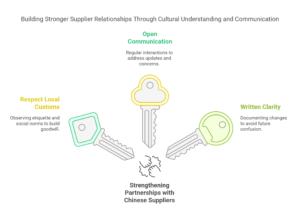International patent litigation plays a crucial role in protecting intellectual property rights and fostering innovation in today’s global economy. As companies expand their operations across borders, the need to enforce patent rights in multiple jurisdictions becomes increasingly important. However, navigating the complexities of international patent litigation can be challenging, as it involves understanding and complying with different patent laws, regulations, and legal systems. In this blog post, we will explore the intricacies of international patent litigation and discuss strategies for success.
The purpose of this blog post is to provide a comprehensive overview of the challenges and considerations involved in international patent litigation. By understanding these complexities and implementing the right strategies, companies can effectively protect their patent rights and maximize their chances of success in cross-border disputes. Whether you are a patent holder seeking to enforce your rights or a defendant facing allegations of patent infringement, this blog post will provide valuable insights and guidance.
Table of Contents
ToggleKey Takeaways
- International patent litigation is complex and requires a deep understanding of the legal systems and cultural differences across jurisdictions.
- Navigating differences in patent laws and regulations is crucial to developing a successful legal strategy for international patent disputes.
- Choosing the right legal strategy for international patent disputes requires careful consideration of the costs and benefits of litigation in different jurisdictions.
- Overcoming language barriers and cultural differences is essential to effective communication and collaboration in patent litigation.
- Managing cross-border discovery and evidence gathering is a critical aspect of international patent litigation that requires careful planning and execution.
Understanding the complexities of international patent litigation
International patent litigation presents unique challenges that differ from domestic patent litigation. One of the main complexities is the need to navigate different legal systems and jurisdictions. Each country has its own set of patent laws and regulations, which can vary significantly from one another. This means that what may be considered patentable subject matter in one country may not be eligible for protection in another. Additionally, the standards for patentability, infringement, and validity can also differ across jurisdictions.
Another challenge is the language barrier and cultural differences that can arise in international patent litigation. Legal proceedings often involve complex technical terminology, which can be difficult to translate accurately. Moreover, cultural differences in legal systems and practices can impact the way disputes are resolved. For example, some countries may prioritize mediation or arbitration over litigation, while others may have different rules regarding evidence gathering and discovery.
Navigating differences in patent laws and regulations across jurisdictions
One of the key challenges in international patent litigation is understanding and complying with the different patent laws and regulations across jurisdictions. Each country has its own patent system, which may have different requirements for patentability, infringement, and validity. For example, some countries have stricter standards for patentability, requiring a higher level of inventiveness or novelty. Others may have different rules regarding the scope of patent protection or the duration of patent rights.
Understanding these differences is crucial for effectively enforcing patent rights in multiple jurisdictions. It requires a deep knowledge of the relevant patent laws and regulations, as well as the ability to adapt legal strategies to fit the specific requirements of each jurisdiction. This may involve working with local counsel who are familiar with the nuances of the local legal system and can provide guidance on the best approach to take.
Choosing the right legal strategy for international patent disputes
When it comes to international patent disputes, there are several legal strategies that can be employed. The choice of strategy will depend on various factors, including the specific circumstances of the case, the jurisdictions involved, and the goals of the parties. Some common legal strategies include:
1. Filing parallel lawsuits: This involves filing separate lawsuits in each jurisdiction where infringement is alleged. This strategy allows for simultaneous enforcement of patent rights in multiple jurisdictions and can be effective in cases where there is a high likelihood of success.
2. Forum shopping: This involves strategically choosing a jurisdiction that is perceived to be more favorable to the party’s position. Factors such as the speed of litigation, expertise of judges, and availability of remedies can influence the choice of forum.
3. Mediation or arbitration: In some cases, parties may choose to resolve their disputes through alternative dispute resolution methods such as mediation or arbitration. These methods can be less costly and time-consuming than traditional litigation and may be more suitable for cross-border disputes.
4. Licensing or cross-licensing: Instead of engaging in litigation, parties may choose to negotiate licensing agreements or cross-licensing arrangements. This allows them to avoid the costs and risks associated with litigation and can be a mutually beneficial solution.
When choosing a legal strategy, it is important to consider the specific circumstances of the case and the goals of the parties. Factors such as the strength of the patent, the potential damages or remedies available, and the likelihood of success should all be taken into account.
Overcoming language barriers and cultural differences in patent litigation
Language barriers and cultural differences can pose significant challenges in international patent litigation. Legal proceedings often involve complex technical terminology, which can be difficult to translate accurately. This can lead to misunderstandings or misinterpretations of key legal concepts or evidence. Moreover, cultural differences in legal systems and practices can impact the way disputes are resolved.
To overcome these challenges, it is important to work with translators or interpreters who are familiar with both legal terminology and technical jargon. They can help ensure accurate translations and facilitate effective communication between parties. Additionally, it may be necessary to engage local counsel who are familiar with the local legal system and can provide guidance on cultural norms and practices.
Another strategy for overcoming language barriers and cultural differences is to engage in early and open communication with the opposing party. This can help build trust and understanding, and may lead to more efficient and effective resolution of disputes. It is also important to be aware of any cultural sensitivities or differences in negotiation styles that may impact the outcome of the case.
Managing cross-border discovery and evidence gathering in patent cases

Cross-border discovery and evidence gathering can be particularly challenging in international patent cases. Each jurisdiction may have different rules regarding the scope of discovery, the admissibility of evidence, and the procedures for obtaining evidence from foreign jurisdictions. This can make it difficult to gather all the necessary evidence to support a party’s case.
One strategy for managing these challenges is to engage local counsel who are familiar with the local rules and procedures for obtaining evidence. They can provide guidance on the best approach to take and help navigate any legal or procedural hurdles. Additionally, it may be necessary to work with local experts or consultants who can assist with technical aspects of the case and provide expert testimony if needed.
Another strategy is to leverage technology and data analytics to streamline the discovery process. This can involve using e-discovery tools to search and analyze large volumes of electronic data, as well as utilizing data analytics to identify patterns or trends in the evidence. These technologies can help expedite the discovery process and reduce costs associated with manual review of documents.
Resolving conflicts between multiple patent owners in different countries
Conflicts between multiple patent owners in different countries can be complex and challenging to resolve. Each jurisdiction may have different rules regarding ownership, licensing, and enforcement of patent rights. This can lead to disputes over the validity or scope of patent rights, as well as conflicts over licensing or royalty payments.
One strategy for resolving these conflicts is to engage in negotiations or mediation to reach a mutually acceptable solution. This may involve licensing or cross-licensing agreements, where the parties agree to share or exchange their patent rights. Alternatively, it may be necessary to seek a judicial determination of the rights and obligations of each party.
It is important to consider the specific circumstances of the case and the goals of the parties when choosing a strategy for resolving conflicts between multiple patent owners. Factors such as the strength of each party’s patent rights, the potential damages or remedies available, and the likelihood of success should all be taken into account.
Balancing the costs and benefits of international patent litigation
International patent litigation can be costly and time-consuming, with no guarantee of success. It is important to carefully consider the costs and benefits before embarking on a cross-border dispute. Some of the costs associated with international patent litigation include legal fees, translation costs, travel expenses, and potential damages or settlements.
On the other hand, the benefits of international patent litigation can be significant. Successfully enforcing patent rights in multiple jurisdictions can provide a strong deterrent against infringement and protect the value of the patent. It can also lead to financial compensation through damages or settlements, as well as licensing opportunities or cross-licensing arrangements.
To balance the costs and benefits of international patent litigation, it is important to conduct a thorough cost-benefit analysis before initiating legal proceedings. This should include an assessment of the strength of the patent, the potential damages or remedies available, the likelihood of success, and the potential costs associated with litigation. It may also be beneficial to explore alternative dispute resolution methods or negotiation strategies that can help achieve the desired outcome at a lower cost.
Addressing the challenges of enforcing patent rights in foreign countries
Enforcing patent rights in foreign countries can be challenging due to differences in legal systems, language barriers, and cultural differences. Each jurisdiction may have different rules and procedures for enforcing patent rights, which can make it difficult to navigate the legal landscape.
One strategy for addressing these challenges is to work with local counsel who are familiar with the local legal system and can provide guidance on the best approach to take. They can help navigate any legal or procedural hurdles and ensure compliance with local laws and regulations.
Another strategy is to leverage international treaties and agreements that provide mechanisms for enforcing patent rights across borders. For example, the Patent Cooperation Treaty (PCT) allows for the filing of an international patent application, which can simplify the process of obtaining patent protection in multiple jurisdictions. Additionally, bilateral or multilateral agreements may provide mechanisms for enforcing patent rights or resolving disputes between countries.
Mitigating the risks of parallel patent litigation in multiple jurisdictions
Parallel patent litigation in multiple jurisdictions can be risky and costly. It can lead to inconsistent outcomes or conflicting judgments, which can create uncertainty and increase legal costs. Moreover, it may be necessary to engage separate legal teams in each jurisdiction, which can further escalate costs.
One strategy for mitigating these risks is to engage in global settlement negotiations or cross-border licensing agreements. This involves reaching a mutually acceptable solution that resolves the disputes in all jurisdictions simultaneously. By avoiding parallel litigation, parties can save costs and achieve a more consistent outcome.
Another strategy is to strategically choose the jurisdictions where litigation will be pursued. This involves conducting a thorough analysis of the legal landscape in each jurisdiction and selecting those that are most favorable to the party’s position. By focusing resources on a limited number of jurisdictions, parties can reduce costs and increase their chances of success.
Leveraging technology and data analytics to improve international patent litigation outcomes
Leveraging technology and data analytics can significantly improve the outcomes of international patent litigation. Technology tools such as e-discovery software, data analytics platforms, and artificial intelligence can streamline the discovery process, analyze large volumes of data, and identify patterns or trends in the evidence.
By using these technologies, parties can expedite the discovery process, reduce costs associated with manual review of documents, and gain valuable insights into the strengths and weaknesses of their case. For example, data analytics can help identify prior art or potential infringers, as well as assess the validity or scope of patent rights.
Additionally, technology can facilitate collaboration and communication between parties in different jurisdictions. Video conferencing, document sharing platforms, and virtual collaboration tools can help bridge the distance and facilitate effective communication and collaboration.
In conclusion, international patent litigation is a complex and challenging process that requires a deep understanding of different legal systems, patent laws, and cultural norms. By understanding the complexities involved and implementing the right strategies, companies can effectively protect their patent rights and maximize their chances of success in cross-border disputes.
Key considerations include navigating differences in patent laws and regulations across jurisdictions, choosing the right legal strategy, overcoming language barriers and cultural differences, managing cross-border discovery and evidence gathering, resolving conflicts between multiple patent owners, balancing the costs and benefits of litigation, addressing the challenges of enforcing patent rights in foreign countries, mitigating the risks of parallel litigation, and leveraging technology and data analytics.
By carefully considering these factors and working with experienced legal counsel, companies can navigate the complexities of international patent litigation and achieve their desired outcomes.
For more information on conducting due diligence on Chinese companies, check out this article. It provides essential insights and strategies for ensuring a thorough investigation before engaging with Chinese companies in international patent litigation.








